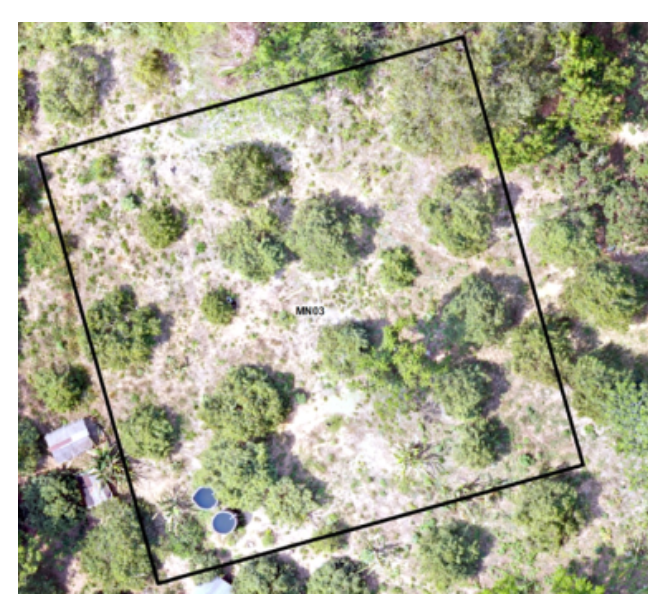A Comparative Sustainable Assessment between Native Durian-Based Agroforestry System and Commercial Durian-Based Mixed Orchard in the Upstream of Ban Dan Na Kham Sub-district, Uttaradit Province
Main Article Content
Abstract
The current utilization of resources in the upstream areas of Ban Dan Na Kham, Sub district has changed by agriculturist changing the way of agriculture from a mixed fruit tree–based agroforestry that relies on the balance of nature to be agriculture that focuses on increasing commercial production that requires increasing chemical use in production. This has resulted in the environment impacts and cause of ecosystem degradation. This study aimed to assess the sustainability of the native durian-based agroforestry system compared with the commercial growing durian-based mixed orchard by using 17 sustainability indices. The sustainability indices were chosen and then classified in the basis of the four dimensions of sustainable developments, namely dimensions of household economic, social and cultural dimensions, local policy dimensions and environmental dimensions. The native durian-based agroforestry system has statistically significantly higher numbers of large forest tree and useful plant species, and amount of soil organic matter than the commercial growing durian-based mixed orchard (p<0.05). Assessment of the sustainability level under the current durian garden management system of both systems. In the overall, native durian under agroforestry system indicated a significantly higher percentage of total sustainability than the commercial mixed durian orchard (p=0.024), social and cultural dimensions and the environmental dimensions in particular. The local administrative organization can used this sustainability dataset on both durian-based production systems for planning the effective use of resources in upstream region including creating a public awareness program for the impact of changing agricultural way on the sustainable local development.
Article Details

This work is licensed under a Creative Commons Attribution-NonCommercial-NoDerivatives 4.0 International License.
All authors need to complete copyright transfer to Journal of Applied Informatics and Technology prior to publication. For more details click this link: https://ph01.tci-thaijo.org/index.php/jait/copyrightlicense
References
กรมพัฒนาที่ดิน. (2553). กระบวนการวิเคราะห์ดินทางกายภาพ. กรมพัฒนาที่ดิน. สืบค้นจาก http://www.ldd.go.th/PMQA/2553/Manual/OSD-04.pdf
จรัณธร บุญญานุภาพ, พนินท์ นนทโคตร, จันทร์เพ็ญ ชุมแสง และพจนีย์ แสงมณี. (2562). การสร้างความยั่งยืนของระบบวนเกษตรต้นแบบบริเวณแหล่งต้นน้ำเพื่อเสริมสร้างเศรษฐกิจชุมชนด้านธุรกิจทุเรียนพันธุ์พื้นเมือง. รายงานวิจัยฉบับสมบูรณ์. สำนักงานกองทุนสนับสนุนการวิจัย (สกว.).
สํานักงานทรัพยากรน้ำแห่งชาติ. (2561). โครงการศึกษาทบทวนการแบ่งพื้นที่ลุ่มน้ำที่เหมาะสมสำหรับการบริหารจัดการทรัพยากรน้ำและผลกระทบจากการแบ่งพื้นที่ลุ่มน้ำ. รายงานฉบับหลัก. สืบค้นจาก http://nwcc.onwr.go.th/file/2.pdf
Benton, T.G., Vickery, J.A., & Wilson, J.D. (2003). Farmland biodiversity: Is habitat heterogeneity the key?. Trends in Ecology & Evolution, 18(4), 182-188.
Chapman, H.D. (1965). Cation exchange capacity. In C. A. Black (ed.) Methods of soil analysis-Chemical and microbiological properties. Agronomy, 9, 891-901.
COM. (1999). Communication from the Commission to the Council, the European Parliament, the Economic and Social Committee and the Committee of the Regions - Directions towards sustainable agriculture. Retrieved 2 May 2014, Retrieved from http://eur-lex.europa.eu/legal-content/EN/TXT/?uri=CELEX:51999DC0022.
Cresswell, H.P., & G.J. Hamilton. (2002). Bulk density and pore space relations. In McKenzie, N.J., H. Cresswell, and K. Coughlan (eds.) Soil Physical Measurement and Interpretation for Land Evaluation. A laboratory handbook (pp. 35-58). CSIRO Publishing.
International Labour Organization. (1999). ILO action on safety and health in agriculture. In Safety and Health in Agriculture, International Labour Organization (pp. 77).
Knickel, K., Renting, H.J.D., & van der Ploeg. (2004). Multifunctionality in European agriculture. In F. Brouwer (ed.) Sustaining Agriculture and the Rural Environment. Governance, Policy and Multifunctionality (pp. 81-103). Wallingford: Edward Elgar.
Kohout, L. (1974). The Pinkava many-valued complete logic systems and their application to the design of many valued switching circuits. In International Symposium Multiple-Valued Logic (pp. 261-284). IEEE.
Kuo, S. (1996). Phosphorus. In Sparks, D.L. Page, A.L. Helmke, P.A., Loeppert, R.H., Soltanpour, P.N., Tabatabai, M.A., Johnston, C.T. & Sumner, M.E. (eds.) Method of soil analysis. Part 3 Chemical Methods, Soil. Sci. Soc. America, Inc. and Ameri- can Soc. Agronomy (pp. 869-919).
Van Huylenbroeck, G., Vandermeulen, V., Mettepenningen, E., & Verspecht, A. (2007). Multifunctionality of agriculture: A review of definitions, evidence and instruments. Living Reviews in Landscape Research, 1(3), 1-43.
Walkley, A. and Black, C.A. (1946). Organic carbon, and organic matter. In Sparks, D.L. Page, A.L. Helmke, P.A., Loeppert, R.H., Soltanpour, P.N., Tabatabai, M.A., Johnston, C.T. & Sumner, M.E. (eds.). Methods of Soil Analysis Part 3 Chemical Methods. Soil Sci.






